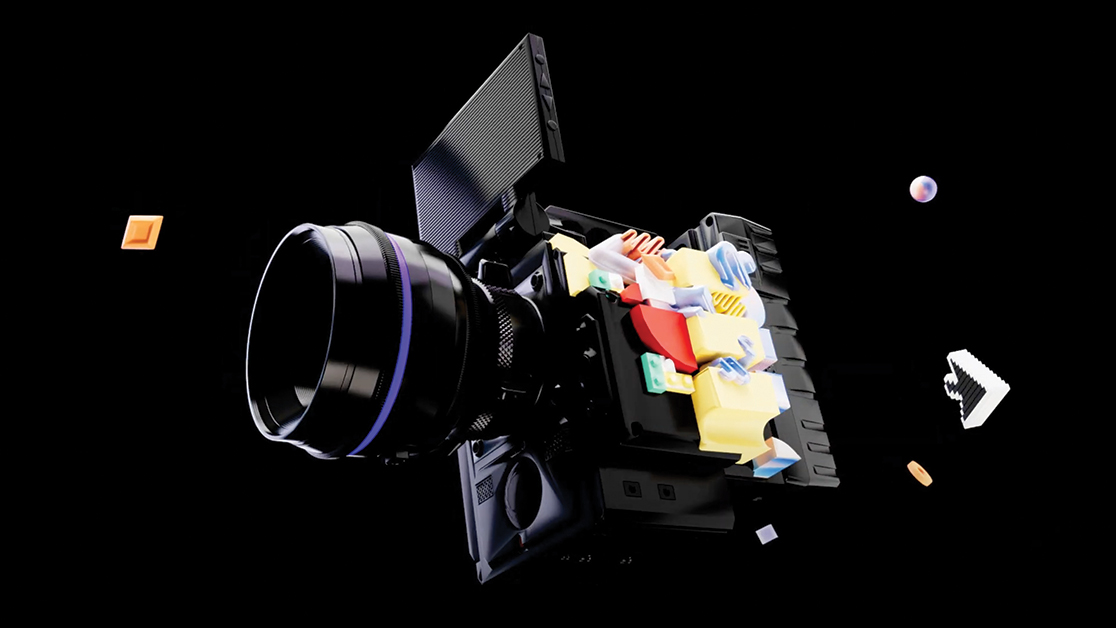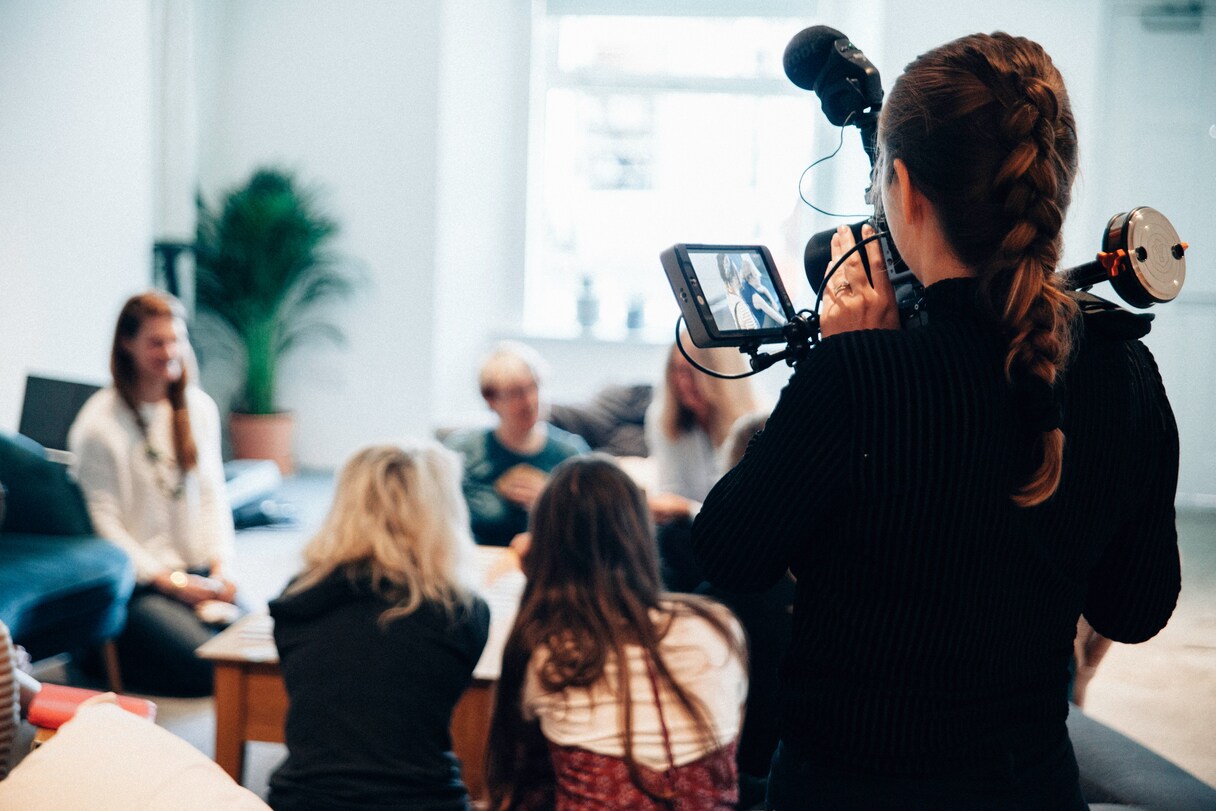As a Film Production student looking to work in creating visual content, building a compelling portfolio can go far in helping you showcase your skills, experience and aptitude for a role.
Not only can it signpost your work but it can also be an effective way of attracting opportunities when leaving film school.
Shelley White, SAE Film Production Programme Leader, said: “When putting it together, you need to make sure your portfolio is engaging and grabs attention.”
“You should try to find ways to let your showreel demonstrate you are a team player and like to collaborate with others. Also, try to bring your personality to the portfolio, let employers know who you are.”
In our blog, we’ll explore some of the most effective tips in building an engaging portfolio that can help you gain exposure and take your journey in the creative industries to the next level.
If you’d like to join our Film Production course, then contact our team now.
Consider what role you want to pursue
First of all, film students need to consider what role they want to pursue and how they want to present themselves online.
Whether you need a film portfolio depends on the career route you’re looking to follow. In fact, if you are not wanting to pursue a career in the visual side of filmmaking, then a portfolio might not be the most effective way to showcase your skills.
Dez Gray, Senior Film Lecturer, said: “If you want to be a Director of Photographer or Cinematographer, then of course visuals as part of a portfolio are very important.”
“However, a showreel cut together showing creative range with different shots from different films and scenes is really useful. You want it to demonstrate different lighting techniques, camera angles and moods that have been evoked. In other roles such as a Script Supervisor, Grip or Gaffer, then the look of the final film and a portfolio is less important.”
Your social media presence
Utilising social media platforms is advisable as a film production professional working in visual content and there are various platforms out there to utilise.
Instagram and LinkedIn are the most obvious communities and where other similar professionals will be gathered online.
Dez said: “Having a social media presence is useful and we advise students to separate the professional from the personal. If you want to work as a camera operative, then having a social media feed full of shots of films, shots of you working behind the camera or on set that promotes you and your work is great.”
Film school
As a film student, focus on developing your technical skills and creative vision through coursework and hands-on projects.
There are opportunities to take advantage of the facilities and expert tutors to make your portfolio stand out. Studying a course is a great opportunity for you to collaborate with peers and get as much experience as possible of working as part of a production team.
SAE Studios is a recent initiative launched by Film Production Tutors Dez Gray and Josh Oliver to help create career opportunities and forge industry connections for SAE students, alumni and staff.
The project’s mission is to offer a production house and professional mentorship scheme.
Such opportunities are a good way of experimenting with a wide variety of genres, styles and techniques to find your creative lane and the formats where you feel most comfortable.
If you produce high-quality work as a student, then it should ensure you develop a strong work ethic, especially when surrounded by instructors and fellow students who can really help you push your creativity.
Many of the peers you work with will be launching their careers at the same time too – so staying connected as part of a network could lead to future opportunities.
Building a portfolio as a film production student
Aspiring film industry professionals wanting to work in visuals should look to create a compelling film portfolio that showcases technical skills, creative vision, and passion for filmmaking.
Shelley said: “Essentially a portfolio is a collection of your best work – be sure to select wisely to showcase your talent.”
“Decide whether you want to identify your area of interest and skill and focus solely on that rather than trying to demonstrate you can do everything, or show your variety and adaptability by including work across various genres and formats.”
“You may also want to tailor your portfolio to each employer to show how you can fit into their team and ethos.”
Dez added: “If you’re a producer looking for funding and want to show you’ve worked on projects and you know what you’re doing, then you will want to highlight any experience that shows this and how you can handle what you’re pitching for.”
“If you’re going for a directing job, then you will look to show how you can handle that. For example, if it’s a commercial you want to work on as a director, then you will want to show where you’ve been able to create visually interesting content with a similar project rather than something very dramatic.”
Those working on putting a portfolio together should highlight prior experience, such as internships, film festivals, and awards, to establish credibility alongside their visual content.
Featuring additional information about the creative process can also help provide a view of your approach to a project and how you make decisions. Some additional pieces of content alongside any visual media could include:
- Background information | It can be useful to show more details about a professional project. For example, filming duration, technical experience, how decisions about budgets were made and the size of the team.
- Scripts | By featuring original scripts or even story boards, then would-be employers can work out how you progressed and the direction you took a project in.
Dez said: “Make sure your best work is first with your portfolio too. Brevity is also everything. If you are doing a showreel, no one is going to sit through a ten-minute epic showreel with shots from every piece of film that you’ve ever made. No one is going to continue watching if you start with the first film you created as a student which is shot in black and white and is very art-house.”
Use your portfolio to tell a story about your artistic ability and identity, and to showcase your technical proficiency. Try to make sure your portfolio website is also as accessible as possible to demonstrate the different types of work you are capable of.
How to use platforms like Vimeo and IMDb to connect with the film industry
Vimeo is perhaps the most commonly used video hosting platform for film producers. Although YouTube is also obviously well-known, many professionals expect Vimeo due to the lack of the ads. You can also enjoy many of the same features including the privacy settings so you can keep content restricted to those you share links with.
IMDb is a useful tool for those looking to start building a platform or a resource to connect with the film industry. The website grants users access to descriptions of filmmakers, cast, release details, technical specs alongside industry news.
Dez said: “IMDb is seen as the industry CV and to have credits on there is so important. It’s an aim for our students here at SAE. For short films, there generally needs to be some kind of festival release or public performance so people have seen it. When they have and it’s listed on IMDb, then that experience is taken seriously.”
Always Keep Your Portfolio Updated
Film Production students need to regularly review and refine portfolios to ensure they accurately represent your latest skills, experience and vision. There’s no point in having a portfolio that is out of date – in fact, if it is and a potential recruiter comes across it, it’s likely to put them off.
Dez said: “If you start down this road, then you have to regularly update your portfolio. There is the challenge of how you regularly post and keep it fresh. If it’s clearly six months or a year since you last touched it, then people will notice.”
To keep it as a living, breathing entity, you can always seek feedback from tutors or colleagues to see which areas you should enhance or improve.
By including scripts, storyboards and any concepts from early on in a project or creative process, you can also show how you bring your idea from the drawing board to a reality, a quality that anyone looking to employ someone or find a collaborator will be pleased to see.
How to use your film portfolio to break into the film Industry
Once you have your portfolio to network and establish connections in the film industry, then don’t be afraid of getting yourself out there and trying to meet directors and other interested industry professionals. Attend film festivals, screenings, and industry events to showcase your work and meet potential collaborators and clients.
Dez said: “Business cards are still a good way of handing over your email, LinkedIn, IMDb and website details. Remember to have one side blank and white as it’s a good way of noting where you are meeting, any notes and who you are.”
Consider joining film communities and forums when at film school to stay informed about industry trends and opportunities and be proactive and persistent in promoting your work and seeking out opportunities in the film industry. If you utilise your portfolio in an efficient way to showcase both professional and passion projects, then you should be able to impress any future employers or clients.
What to remember when launching your career
The role of the portfolio is to establish yourself as a professional, demonstrate your experience and technical proficiency.
As we’ve seen, it’s not needed for everyone looking to develop a film industry career. But if you are working in the visual side of the sector, then it can be invaluable.
Remember to continuously update and refine your portfolio to reflect your growing skills and experience. Stay focused and motivated, and be open to new opportunities and challenges in the film industry. Good luck!
STUDY FILM Production at SAE
If you want to work in film production in the film industry, get to grips with the latest video editing software and hone your skills in a uniquely collaborative environment, then our Film Production degree could be for you.
With high-end digital cinema cameras and production suites, our facilities and expert tutors are well placed to give your career the best possible start in this fast-paced and dynamic industry.





































